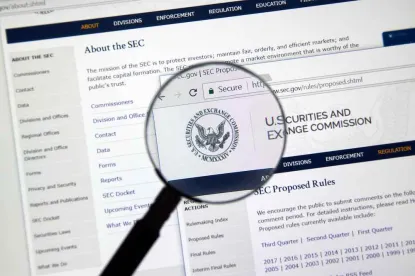Effective August 16, 2021, there will be new financial thresholds for determining whether an investor of a registered investment adviser (RIA) is a “qualified client” under Rule 205-3 of the Investment Advisers Act of 1940, as amended (Advisers Act) and can thus be charged performance-based fees.1 The assets-under-management test will increase from $1,000,000 to $1,100,000 and the net worth test will increase from $2,100,000 to $2,200,000.
The Securities and Exchange Commission (SEC) issued an order on June 17, 2021 describing these changes and the reasoning therefor.
The increases to the financial thresholds are required by the Dodd-Frank Wall Street Reform and Consumer Protection Act, which amended section 205(e) of the Advisers Act to provide that every five years beginning on July 21, 2011 the SEC must adjust these threshold amounts to account for inflation by rounding to the nearest multiple of $100,000 based on the Personal Consumption Expenditures Chain-Type Price Index published by the U.S. Department of Commerce.
The increased threshold amounts apply to new investors and to existing investors that are making new commitments, but are not retroactive, so that advisory agreements entered into before August 16, 2021 need not be amended. However, any new or existing private funds (that are still accepting new commitments) will need to revise their offering documents, subscription agreements, and advisory agreements to reflect the new thresholds.
1While Rule 205(a)(1) under the Advisers Act prohibits an RIA from entering into an advisory agreement where it will charge its clients a performance-based fee (such as carried interest or an incentive fee), Rule 205-3 provides an exemption if the client is a “qualified client.” A “qualified client” is a person who has a certain dollar amount in assets under management (now $1,100,000) with the RIA immediately after entering into the advisory agreement (the “assets-under-management test”) or if the RIA reasonably believes, prior into entering into the advisory agreement, that such person has a net worth of more than a certain dollar amount (now $2,200,000, the “net worth test”).






 />i
/>i
